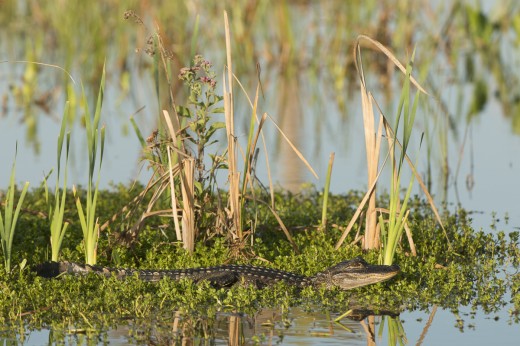In my last post, One Becomes Eight, I explained that what was originally going to be a single, one-hour documentary has now transformed into an eight part miniseries. This will provide its own challenges, both technically and artistically, but I believe it better serves the story. Each of the eight episodes will focus on a habitat or group of habitats. This structure is the most natural fit and has been used by numerous natural history series, most notably the BBC’s Planet Earth.
I have decided on the breakdown of episodes and have a rough structure and outline for each episode, but I have not decided on the overall order of the episodes. I have chosen to craft each episode a little differently using a different motif to tie the various themes, ecosystems, and species together. Below is a quick synopsis of each of the eight episodes in alphabetical order.
- Beaches: The beach, likely Florida’s most iconic habitat, is home to more than just fisherman and spring breakers. Get down on the level of the sand and explore this habitat from the breaking waves of the swash to the dynamic sand dunes.
- Forests: Whether a hardwood forest or pineland, Florida’s forests, particularly those in south Florida, have a distinctly tropical influence that sets them apart from similar forests across the rest of the country.
- Freshwater: Float down a clear, spring-fed river, probe deep into the mysteries of a sinkhole lake, witness a river disappear deep into the ground, and experience the restoration of a canal back into a free flowing river.
- Prairies: Florida’s prairies and grasslands experience a very short fire cycle, constantly burning and recovering, which makes these often overlooked habitats both fascinating and unique.
- Saltwater: Journey off the coast of Florida to explore the numerous saltwater habitats. Move from the shallow estuaries protected by barrier islands and mangrove forests to the fragile, yet diverse coral reefs and finally to the open ocean.
- Scrub: Explore Florida’s unique scrub habitat through the behavior and biology of Florida’s only endemic bird, the Florida Scrub Jay.
- Swamps: Experience the wonder and mystique of Florida’s swamps from their tea colored waters to the airy canopy and learn about the special creatures that make these incredible landscapes their home.
- Wetlands: Spend a year in Florida’s wetlands and witness the dynamic changes of the seasons as birds migrate, water levels fluctuate, and new life abounds as the breeding season begins.
Now that I have a basic structure for this series, I have started to break down each episode into topics, themes, and sequences and can start telling the story of natural Florida. Be sure to follow the project to see how this all unfolds!







You’re missing one major habitat … the “Golf Course Ecosystem” dominated by retirees swinging their clubs in the air. If you include that habitat, maybe they (the retirees) will help fund your effort, one ball at a time.